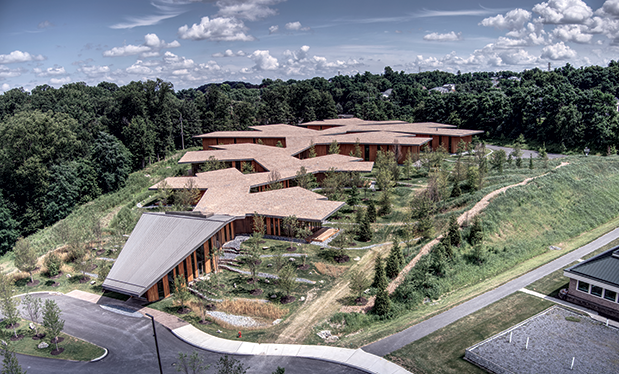Do you deliver your foreman classes online?” is a question NRCA has received over the years. And before the COVID-19 pandemic, the answer was “no.”
NRCA’s foreman classes are conversational and interactive. Translating a course that relies on role playing and participants’ body language to an online platform previously was thought to be impossible. However, this alternative method of education not only is feasible, it is productive.
What is virtual training?
Ninety-eight percent of U.S. corporations have incorporated online learning into their organizations, according to Small Business Trends.
Virtual learning can take place in a variety of formats, including:
- Conferences on Zoom or other platforms
- DVDs
- Webinars and webinar recordings
- Facebook Live
- Self-paced online courses
- YouTube
- Podcasts
- FaceTime demonstrations
You probably have engaged in virtual training experiences you did not consider to be training because they weren’t in a traditional format. These experiences are considered informal training because there is no structure surrounding them in terms of requirements, tracking and/or certificate issuance.
In addition, virtual training experiences can be defined as synchronous or asynchronous. A synchronous experience is happening at the same time for everyone, such as a live webinar or training course taught by an instructor on a specific day.
An asynchronous experience does not happen at the same time for everyone, such as watching a pre-recorded YouTube video. You can stop, rewind or pause the video and watch the rest of it later. Asynchronous learning experiences are self-paced, meaning you can engage with them at times convenient for you. They may have completion deadlines, but you set the pace of your progress.
NRCA offerings
NRCA was an early adopter of virtual learning, hosting live Ask the Expert synchronous training about various topics affecting roofing contractors, such as safety and technical concerns, on the internet in 2004, well before many organizations were doing it.
NRCA’s asynchronous programs include Roofing 101, Training for Roof Application Careers and Design Essentials for Roof Performance. These programs are housed on a learning management system accessible via NRCA’s website, nrca.net.
The learning management system tracks where participants stop in programs and picks up in those exact locations when participants return. If required, the LMS will issue certificates when participants successfully complete program requirements. The LMS also retains records of completed courses, and administrators can access data to help assess program effectiveness among those enrolled.
TRAC is an asynchronous online course useful for all levels of roofing professionals but designed for novice installers. It addresses basic concepts, including what it means to work in roofing, skills such as measuring a roof, defining slope, understanding all aspects of a roof and the materials that comprise roof systems.
NRCA considers TRAC an installation program. It might seem untenable to think a virtual class can fulfill installation training requirements, but the success of any program—whether virtual or in-person—depends on its specific aims. In TRAC’s case, NRCA aims for conversational competence.
TRAC is intended to educate new installers enough to engage in conversations with foremen and others on crews. Ideally, participants will be able to be helpful on jobs right away because they can identify various tools and materials and, though not yet able to execute skills, have a baseline knowledge of activities occurring on roofing jobs.
This not only makes new workers more useful and less of a burden to foremen during the initial weeks and months, but it also provides some measure of confidence when engaging with experienced installers. Such training also gives a boost in workers’ long-term confidence in their companies.
Design Essentials for Roof Performance courses are aimed at helping individuals understand design aspects of various roof systems and components. They are useful for architects, students and those in sales, estimating or project management.
Although NRCA was early to adopt virtual training, the programs primarily were asynchronous. Other than webinars, NRCA was not hosting synchronous virtual conferences until the COVID-19 pandemic altered how the world operates.
Once NRCA realized in-person training events would be impossible to host for longer than a few weeks, staff began experimenting with synchronous online training. NRCA’s first online conference in the spring of 2020 was a two-day Qualified Trainer conference.
Participating in training for two full days via Zoom might sound disconcerting, but it was and continues to be surprisingly effective even for those accustomed to being outside all day or with minimal online experience.
There are tradeoffs. An organization hosting virtual training cannot provide food (which is a staple of good training!), and there are fewer opportunities to get to know people informally or experience the kind of camaraderie you only can have by being with people. When participating virtually, it can be challenging to stay alert and not respond to regular life still swirling around you. And certain classes require hands-on demonstrations, which participants must provide and/or effectively set up on their own.
But on the upside, there is comfort in the convenience of shutting down your computer at the end of the day and not having to head out to an airport or hotel. Obviously, there is a savings in terms of travel costs and time away from work and home. And NRCA has found the overall quality of instruction is still excellent and effective.
Online learning
statistics and trends
Sources (in alphabetical order): American Heart Association; Arizton.com; Findstack.com; Reportlinker.com; Research Institute of America/SH!FT; The Open University in Britain, Walton Hall in Milton Keynes; Thrivemyway.com; University of the Potomac, Washington, D.C.
NRCA’s virtual conferences
NRCA now hosts several conferences virtually that once were offered only as in-person events:
- Foreman Leadership Training
- CERTA Train-the-trainer
- NRCA Qualified Trainer Conference
- Customized courses
During the past two years, NRCA has learned some important lessons about synchronous virtual training: Events only maintain their quality when each participant is using his or her own computer/device. Computers/devices must have cameras and microphones because trainers expect everyone to be on camera the entire time and able to participate. And computers are preferred to tablets; phones are the least preferred device.
That said, there are times when phones are useful in virtual experiences. For instance, during the CERTA Train-the-trainer class, participants must demonstrate hands-on torching. Often, this is done in a location where Wi-Fi is spotty or nonexistent and a phone’s data is required. Also, phones are more portable and easier to transport than a computer.
DID YOU KNOW?
NRCA’s Training for Roof Application Careers is
useful for onboarding and retaining new employees. Its current pricing and packaging structure allows
you unlimited use to train as many employees as you want. For more information, visit nrca.net/trac.
Life in virtual training
If you have employees who have never navigated a Zoom meeting, no worries: Trainers expect to log on early to help participants find their cameras, get their mics working and explain how things work. Also, trainers will explain what could happen during the course of online training, such as one or more participants’ audio periodically sounding garbled, someone’s image freezing temporarily or someone being inadvertently booted out of the class. This is all part of life in virtual training.
Virtual training is not the best option for everyone or for every topic. However, it provides opportunities that previously did not exist. NRCA is glad to be engaged in providing as many opportunities as possible for the betterment of the roofing industry.
Now, when asked whether NRCA offers its foreman classes online, the answer is a resounding “yes.”
AMY STASKA is vice president of NRCA University.



